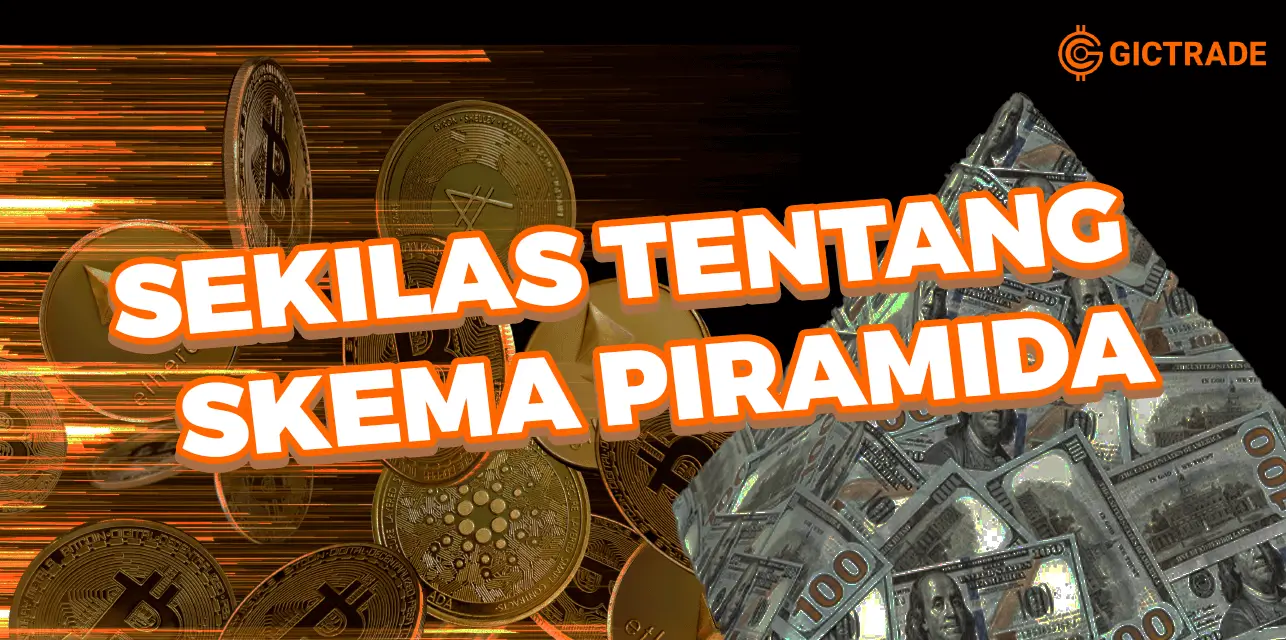What is a pyramid scheme?
A pyramid scheme is a scam in which a marketing company promises to help you earn a huge profit in exchange for recruiting new participants into the scheme. On the surface, the scheme appears to be a legitimate company that sells products or services, but its main goal is to always increase the number of participants in the scheme rather than increasing product sales. New entrants are usually referred to as investors, salespeople, agents or distributors, or some variation on this title. In a legitimate business or MLM, salespeople are compensated for selling products or services. Compensation structures tend to reward participants for recruiting a growing number of new participants—not because of ever-increasing product sales. Typically, participants in this scheme are charged membership fees and commissions, and must purchase a certain amount of product inventory each month in order to stay in the company. Little attention is paid to actually marketing and selling the product.How Does the Pyramid Scheme Work?
The pyramid scheme starts with one person or a small team recruiting participants to join a new business venture. Recruits are required to invest money into the venture, pay membership fees or purchase a certain number of products each month. The founders receive sales fees and commissions from other participants, plus revenue from inventory sales. Since then, the scheme's success has depended almost entirely on ongoing acquisitions and growing investments by an ever-growing base of new participants. The "pyramid" in its name comes from a fraudulent structure, where one participant recruits several additional participants to work for them. These members then recruited more new participants under them... and so on. A small number of participants at the top of this scheme make a large amount of money by harvesting commissions and fees from the layers of salespeople and distributors recruited to work under them. "At the top of the pyramid, the founder or founders are basically receiving a payment from every participant below them," said Jonathan Perlman, an attorney at the Miami law firm Genovese Joblove & Battista.
Pyramid Scheme vs MLM
These multi-level marketing companies and schemes share a similar business model. However, MLM companies can operate as legitimate businesses, whereas pyramid schemes are always illegal. There are certain similarities between legitimate MLMs and these illegitimate schemes. Here are the points where these two models are similar to each other:- Participants do not earn a fixed salary, and are expected to purchase a certain number of products per month in order to remain part of the company.
- Participants can receive compensation or commissions for recruiting new salespeople to the business.
- Participants work as independent contractors who make money selling products and/or earn commissions based on what they sell.
- Participants are usually charged a membership fee. They sell products or services through person-to-person sales, and pay a commission on sales commissions up the chain.
| Difference | Pyramid scheme |
MLM |
| Required to invest money upfront to join | ✅ |
❌ |
| The company will buy back unsold inventory | ❌ |
✅ |
| Attention is paid to marketing the company's products | ❌ |
✅ |
|
More emphasis on recruiting than selling products |
✅ |
❌ |
| Higher commissions for recruiting than for sales | ✅ |
❌ |
Pyramid Scheme vs Ponzi Scheme
Bernie Madoff's investment scam is perhaps the most famous Ponzi scheme in history. Madoff raised money from more than 5,000 investors without ever having any funds in the market. In all, he managed to defraud people of more than $65 billion dollars. Pyramid schemes and illegal Ponzi schemes have certain similarities, but here are the big differences. In most cases, the orchestra of Ponzi schemes only asks for one "investment", with large returns promised at a later date. With pyramid schemes, victims "make money" by recruiting more people into scams. Ponzi scammers do not require their victims to tie up more participants or take further action to participate. "In a Ponzi scheme, investors 'profit' from the underlying mythical investment," the Files said. "The returns to investors now come from the new money raised by the Ponzi organizers."Difference Between Main Ponzi Scheme and Pyramid Scheme
- Initial investment. Victims of Ponzi schemes "invest" money in the scheme, and are led to believe that they will make huge profits from their investments in the future.
- Involvement. In the pyramid scheme, participants are expected to bring in new recruits on an ongoing basis. But once the victims of the Ponzi scheme invested, they had little further involvement in the scheme.
- Income. Both the victims of the Ponzi scheme and the pyramid scheme get money from new participants, but only the participants of the pyramid scheme know about it.
Types of Pyramid Schemes
There are a wide variety of different pyramid schemes out there, which can make this type of scam a bit difficult to identify. For example, poorly designed MLMs can turn into pyramid schemes when they become impossible to maintain without constant hiring. Some pyramid schemes actually sell products, while others fulfill promises to sell products, or make money for others.Chain emails
"Chain emails" have been around forever, but the chain email version—which promises to give a sum of cash to participants—is an illegal version of the traditional pyramid scheme. Different chain emails may come with different instructions, but the gist is the same. The recipient sends a sum of money to the first person registered in the email group. They then remove the person's name from the list, add them down, and forward the email to another person's group with the intention that they do the same.Investment Club
Although many investment clubs present legitimate forums to help people raise their money for the purpose of making group investments, in some cases they serve as pyramid schemes. In fake investment clubs, recruiting new investors is a higher priority than actually choosing legitimate investments. There is usually a promise of quick returns, and scheme makers encourage early investors who have received "returns" to create their own investment clubs. PThe investor invited their friends, business associates, and relatives to join and invest in the scheme. "To do this, planners promise club creators a cut of every dollar a club member invests," Perlman said. "Club builders are also told to teach investment club members how to start their own club, where they will receive compensation and then compensate the original club creators, and so on."Hi-Tech Marketing Luck
Agents are employed by Fortune Hi-Tech Marketing to sell products made by legitimate companies such as Dish Network and Frontpoint Home Security, as well as a variety of health and beauty products. The problem is that salespeople make more money from their hires, while the annual fees they pay help make the top executives rich. The company eventually settled the lawsuit with the FTC and paid nearly four hundred thousand people who were deceived for a total of more than $5.5 million. After knowing about pyramid schemes and how they work, their differences, and types, you can start trading on GIC without having to worry about any kind of scams. Because by trading at GIC, the transactions carried out will be transparent, by bringing together market makers and traders themselves so that the transactions made will be open. Register now to be able to trade starting from 150,000 Rupiah!
 Last:
Last: 







